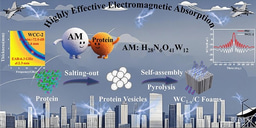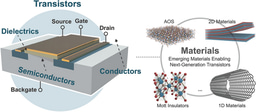Anionically-Reinforced Nanocellulose Separator Enables Dual Suppression of Zinc Dendrites and Polyiodide Shuttle for Long-Cycle Zn-I2 Batteries

As demand grows for safe and sustainable energy storage, zinc–iodine (Zn–I2) batteries have emerged as a promising candidate due to their fast kinetics and low cost. However, zinc dendrite growth and polyiodide shuttle effects remain major barriers to long-term stability. Now, researchers from Nanjing Forestry University and Nanjing University, led by Prof. Jizhang Chen and Prof. Yagang Yao, have developed a straw-derived, anionically reinforced nanocellulose separator that effectively addresses both challenges.
Why This Separator Matters
- Dual Functional Design: Simultaneously suppresses zinc dendrite formation and polyiodide migration through electrostatic repulsion and enhanced ion transport.
- Sustainable & Scalable: Fabricated from renewable straw biomass using a simple solution-casting method—eco-friendly and cost-effective.
- Ultrathin & Strong: At just 20 μm thick, it offers 147 MPa tensile strength, outperforming conventional glass fiber separators.
Innovative Design and Features
- TOCN-A Structure: Combines TEMPO-oxidized cellulose nanofibers (TOCN) with anionic polyacrylamide (APAM) to boost negative charge density and mechanical integrity.
- Enhanced Zn2+ Transport: Achieves a Zn2+ transfer number of 0.45 and ionic conductivity of 14.3 mS cm-1, promoting uniform zinc deposition.
- Polyiodide Blocking: Strong electrostatic repulsion reduces I3⁻ migration by 81%, significantly improving cathode stability.
Applications and Performance
- Long Cycle Life: Zn//Zn symmetric cells run for >1800 h at 2 mA cm-2/2 mAh cm-2, and 300 h under extreme conditions (25 mAh cm-2).
- High Stability: Zn–I2 full cells retain 94.2% capacity after 10,000 cycles at 2 A g-1, with ultralow decay rate of 0.0058‰ per cycle.
- Pouch Cell Validation: Demonstrates 99.4% capacity retention over 300 cycles and successfully powers LED panels and electronic devices.
Conclusion and Outlook
This work presents a multifunctional, biomass-derived separator that tackles both anode and cathode challenges in Zn–I2 batteries.
Follow the Topic
-
Nano-Micro Letters

Nano-Micro Letters is a peer-reviewed, international, interdisciplinary and open-access journal that focus on science, experiments, engineering, technologies and applications of nano- or microscale structure and system in physics, chemistry, biology, material science, and pharmacy.






Please sign in or register for FREE
If you are a registered user on Research Communities by Springer Nature, please sign in